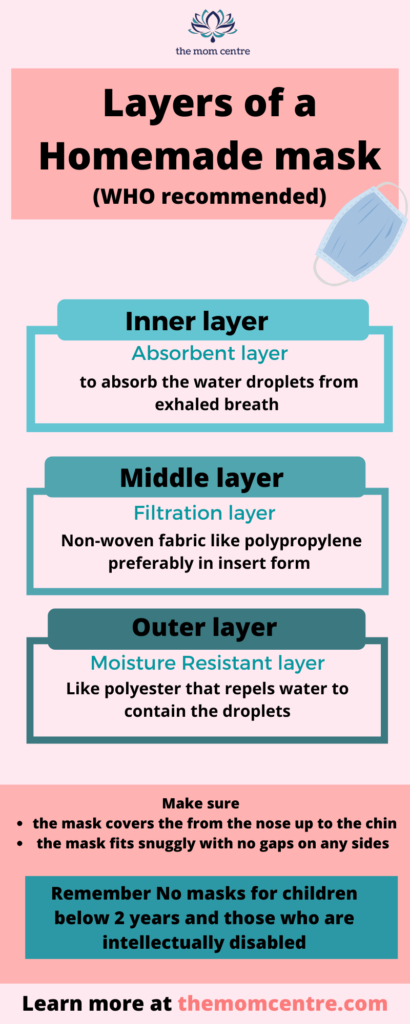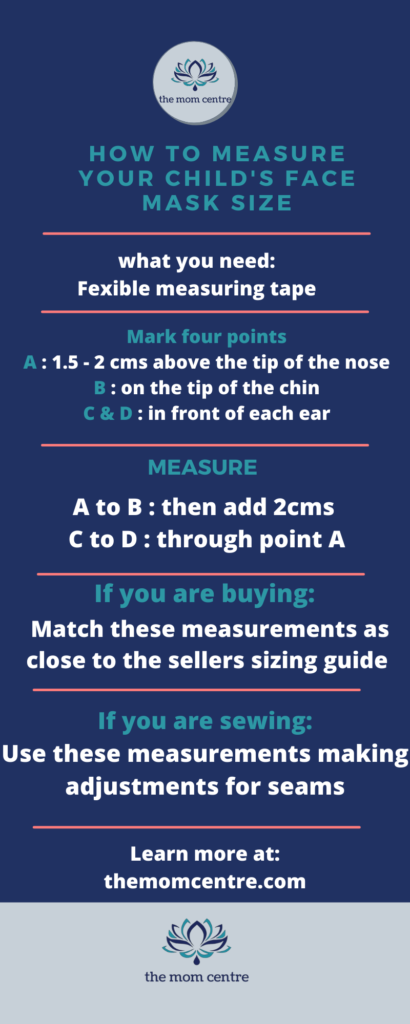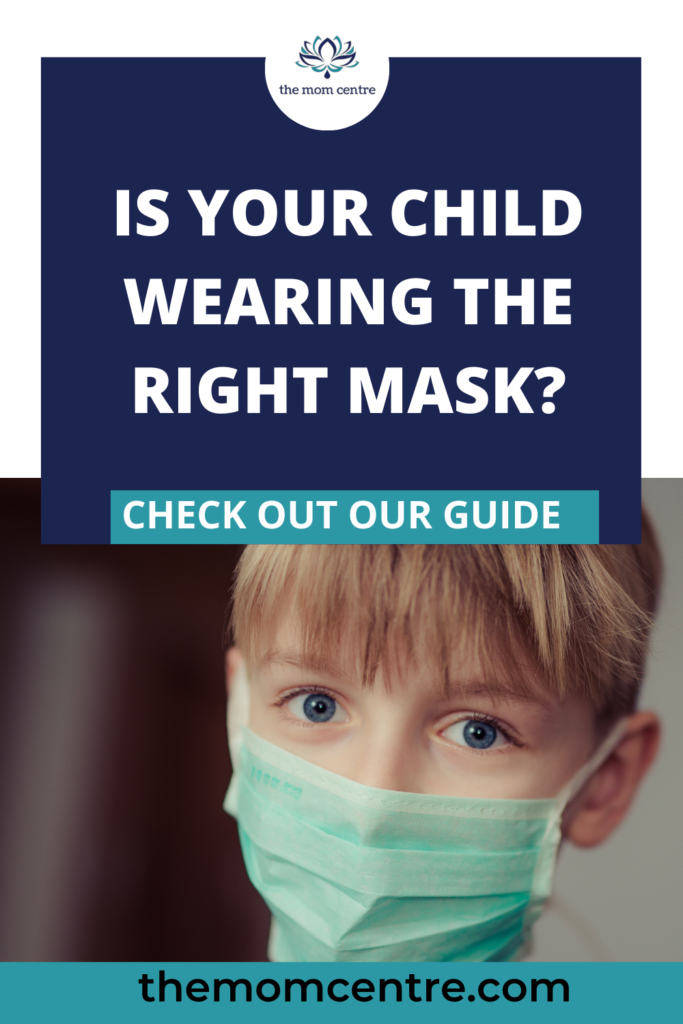Recent reports have suggested that children may be at higher risk of being affected in the third wave of COVID-19. While these reports are lacking substantial supportive evidence, as parents this is worrying.
Our best strategy would be to be prepared for the worst while hoping for the best. The first step in protecting our children is ensuring they are wearing a mask when they are in contact with people other than family members, whether it’s playgroups or school.
It’s not just enough to wear a mask, it’s prudent to wear one that is right. While we adults are masking up are our kids protected adequately?
In this article we will look at various components like material, size/fit, need for a medical grade mask.
1. Material
As per WHO guidelines it may not be adequate to wear a single-ply cloth mask. Adding more layers to the mask improves the filtration and efficiency of a mask. It also ensures the reduction of respiratory droplets containing the virus that comes through the mask.
Here’s a detailed guide on what a homemade mask should consist of.
The mask should have three layers
- Inner absorbent layer
- Middle filtration layer
- Outer water-repellent layer
now let’s look at what these layers are and what material to use
Inner absorbent layer
The inner layer is the one that is in direct contact with your face and it should be a hydrophilic layer, meaning a material that absorbs water.
This will help easily absorb all the water droplets that are dispersed when you exhale as well as while coughing and sneezing. WHO also recommends this layer to be white which will help determine if it’s soiled or wet. Being separate from the other two layers helps contain the virus particles within the mask.
Cotton is a great example of this material. Use a white cotton handkerchief or old T-shirt if you are making a mask at home.
Middle filtration layer
The middle layer can be an insert or a sewn-in material. Ideally, it should be an insert that goes into the pocket created between the inner and outer layers.
This is the filtration layer. This way you can easily dispose of the used layer and insert a new one for every use.
It should be made of nonwoven fabric-like Polypropylene which is a spun-bond fabric. You will notice that this is the material that is most often used in PPE kits and other personal protective gear used in hospitals and medical setups. Being inexpensive is a great way to make your mask more efficient.
The outermost water repellent layer
This should ideally be a hydrophobic material that repels water droplets and moisture. Therefore it can be made of a synthetic material like polyester or a polyester and cotton blend.
Since this is the layer that you will be touching often being separate and waterproof helps you prevent from carrying any contaminant on your fingers and hands.

2. The right size and fit
A properly fitted mask is an efficient mask. A poorly fitted mask simply fails to serve its purpose and is therefore as good as not wearing one.
Whether you are making a mask at home or buying one make sure to buy the right size.
- If you are buying a mask.
Due to the lack of standard sizing guidelines it might be extremely difficult to the right size especially for kids. Most sellers use arbitrary sizing like XS, S, M etc to define sizing. Because of this it might be appropriate to determine the size based on manual measurements.
How to measure facemask size for a child?
Make sure to use a flexible measuring tape to measure the dimensions.
You will need to determine two measurements: the length and the width. To get these you need to mark 4 points on the child’s face as shown in the figure.

- The length: pick a point A 1.5-2cms above the tip of your child’s nose and another point B on the tip of the chin. Measure from A to B and add 2cms. This is the length of the mask.
- The width : pick two points just in front of each ear, points C and D. Now measure the width from C to D making sure it runs through point A. This is the width of the mask.
Use these measurements to determine the size of the mask while purchasing one. Look for size guide in seller’s description and match the manual measurements as best as possible to the sellers size.
If you are stitching a cloth mask yourself at home
You might be able to get a better fitted and more comfortable mask if you make one yourself. You can measure the mask as suggested above, include the necessary adjustments for seams.

3. Should I use a cloth mask or a Medical grade mask for my child?
This depends on the general health condition of your child.
If your child is suffering from any chronic health condition that makes him or her a high risk then it is highly recommended to use a medical grade mask.
Some of the common chronic medical conditions that will need the use of medical grade masks are given below :
- Bronchial Asthma
- Cystic Fibrosis
- Diabetes
- Chronic liver or kidney disease
- Any heart condition that has required surgery or followup
- Any type of cancer in the past or present.
- Any immunodeficiency disorder
- If your child is severely underweight or overweight
If your child does not belong to any of the above category but is on some kind of long term medications, then contact your pediatrician or treating doctor to determine if he needs to be categorised as high risk for COVID-19.
FAQs
WHO suggests masks for children over 5 years of age, whereas CDC suggests all children over 2 years wear masks.
Because of the risk of choking children younger than 2 years should not be made to wear mask.
Because of these conflicting recommendations the general consensus by many pediatricians including myself is to recommend masks for all children over 2 years of age with proper training and supervision for children between 2 and 5 years.
If your child is otherwise healthy and is only on antiepileptics, there is no data suggesting his increased risk for COVID-19. However, if he has delayed development, intellectual disability or is disabled in any form he or she might be at slighty higher risk of contracting and suffering from more severe disease.



